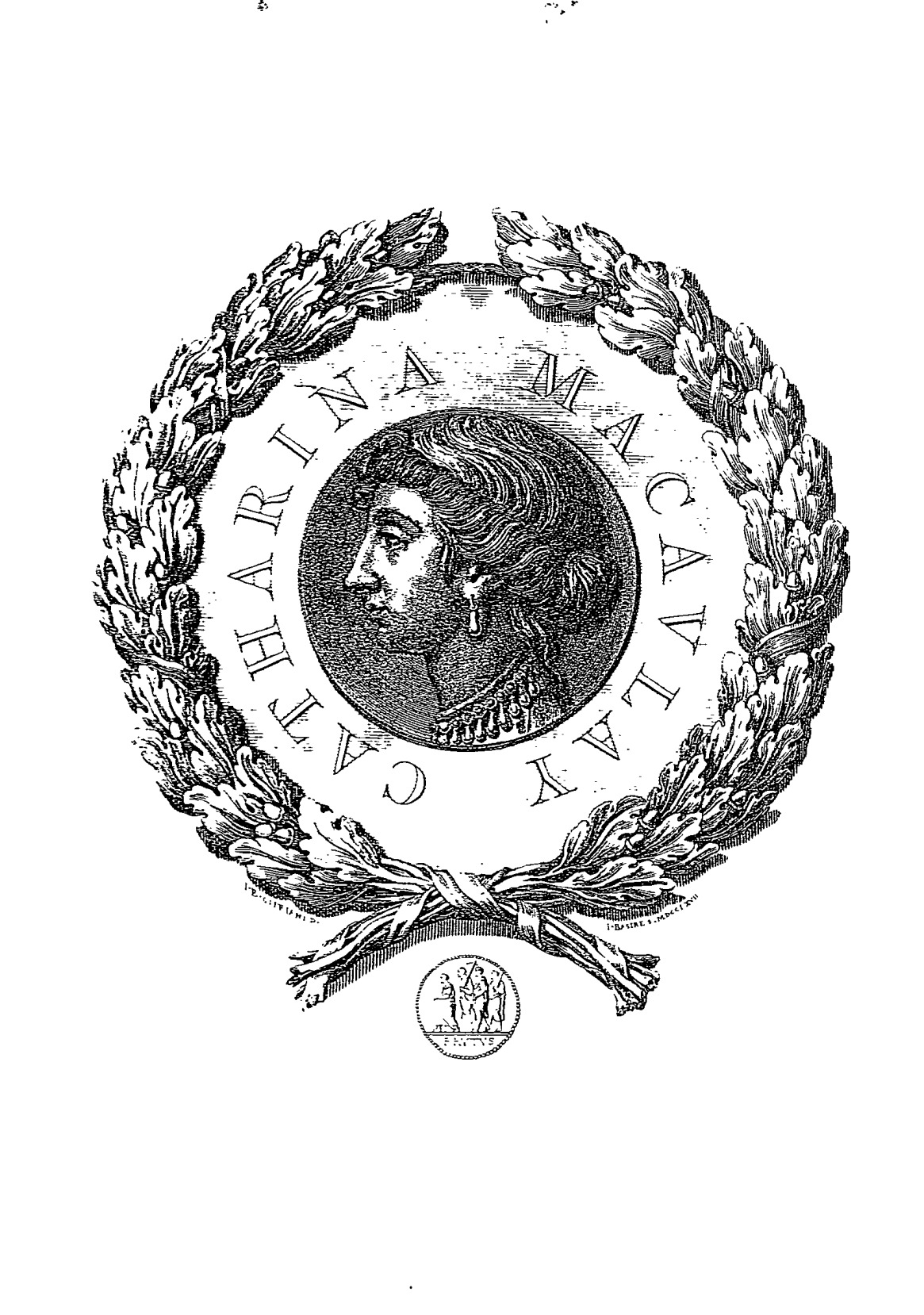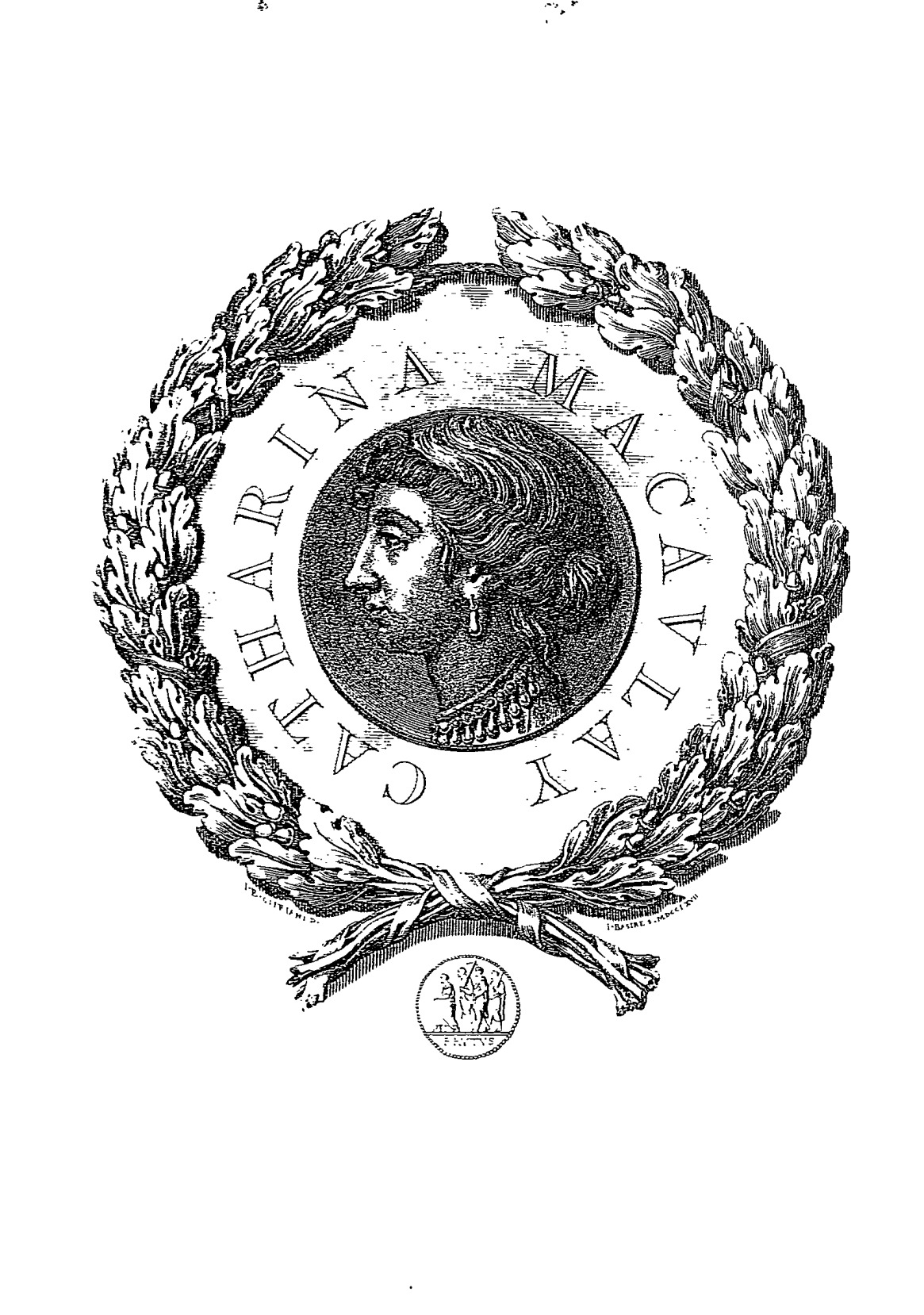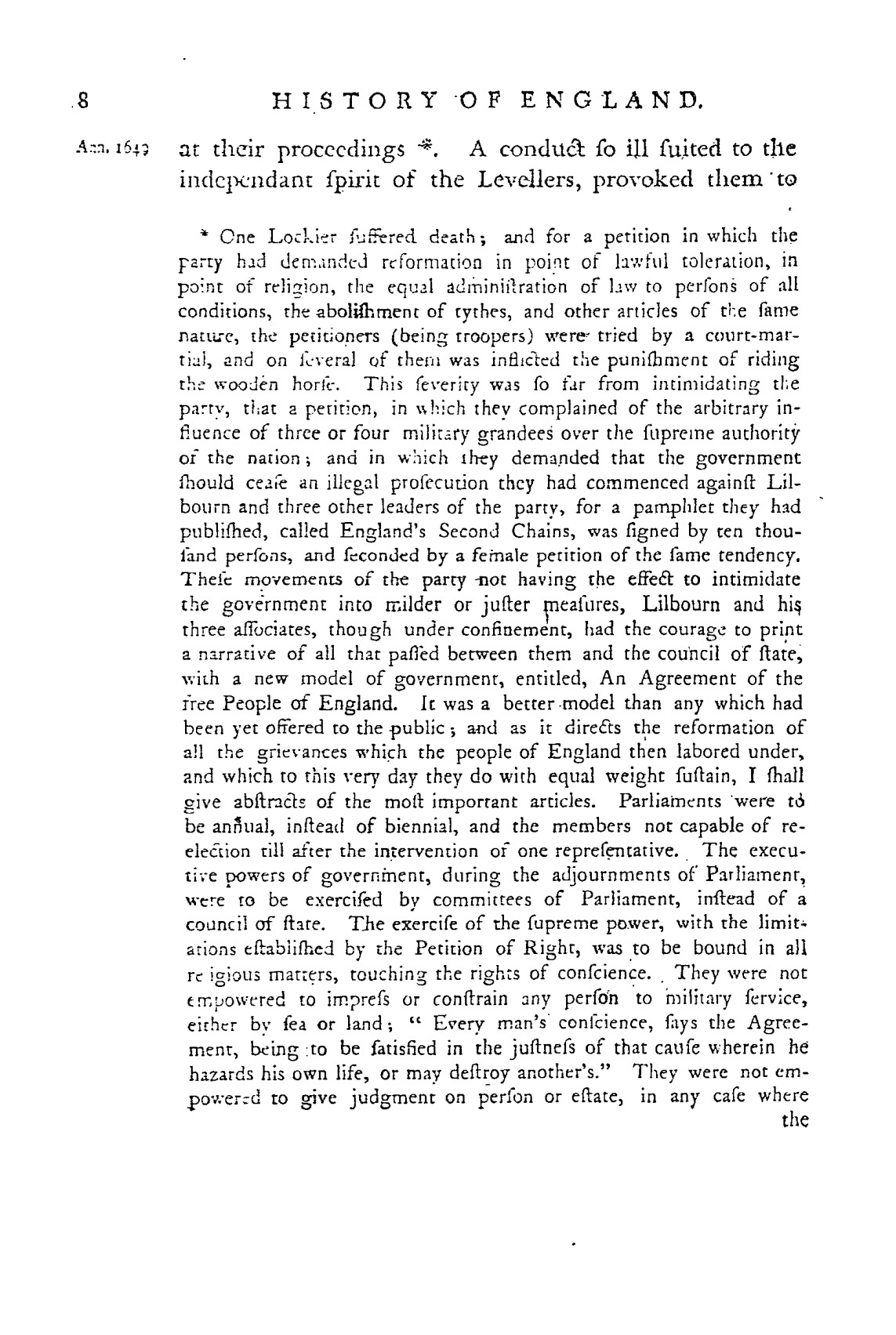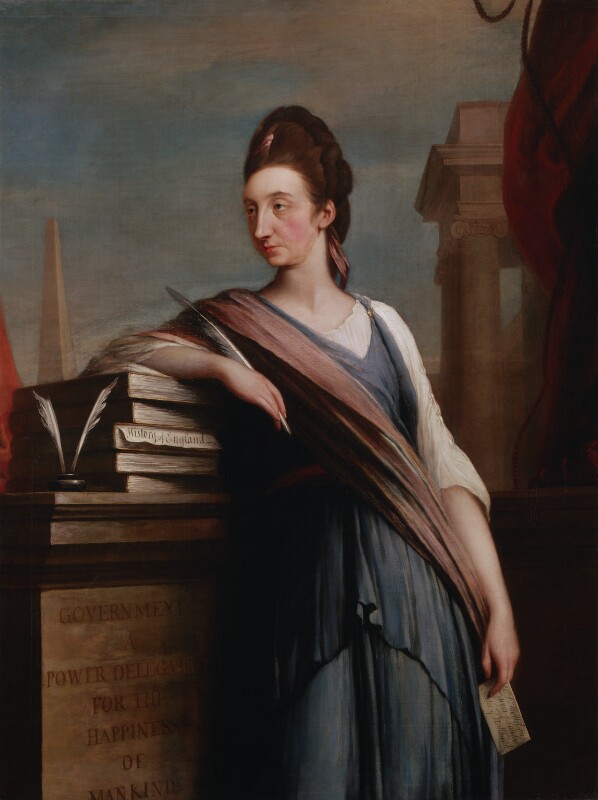This post is part of our Women & History Spotlight Series, which will run through March 2021. Spotlights in this series focus on women's contributions to history in the database.
Authored by: Kate Moffatt
Edited by: Michelle Levy and Kandice Sharren
Submitted on: 03/12/2021
Citation: Moffatt, Kate. "Cataloguing Catharine Macaulay." The Women's Print History Project, 12 March 2021, https://womensprinthistoryproject.com/blog/post/64.
Figure 1. From the third volume of Macaulay's History (ECCO).
ADVERTISEMENT.
The author, having heard that long notes were tedious and disagreeable to the reader, has altered the method which she pursued in the five first volumes of this history, and at a much larger expence of labour has wove into the text every part of the composition which could be done without breaking into the thread of the history.
— From volume 6 of Catharine Macaulay’s The History of England (1781)
“Animated with the love of liberty, and an enthusiastic regard to English patriotism, I ventured to take the pen in hand . . .” (vii). So writes Catharine Macaulay partway through the preface of the sixth volume of her The History of England, from the accession of James I to that of the Brunswick line, after a scathing critique of some of the male historians who had published before her — of Paul Rapin de Thoyras, for example, she declares, “[his popularity] was more from the circumstance of his having no competitor than from the intrinsic merit of his work” (vi). Of David Hume, she opines that although he is “blessed with that genius and profound sagacity necessary to form a complete historian,” his historical work, “whilst [serving] as an elegant pastime for the hours of leisure or idleness, leaves the reader perfectly ignorant as to characters, motives, and often facts” (vi). And facts were Macaulay’s bread and butter, contributing to her distaste for Hume and his work, with whom and about which she fundamentally disagreed; besides being a staunch royalist to Macaulay’s republican, Daniel Woolf describes Hume as also being “among those eighteenth-century historians for whom the narrative was all, and though it must be ‘true’, that truth lay in reason, common sense, and rhetoric, rather than research” and that, “with few exceptions, he avoided primary sources” (694).
In contrast, Macaulay’s eight-volume History made use of printed sources, manuscripts, letters, and at least five thousand tracts and sermons over the more than twenty years that she researched and wrote it (Hill and Hill 274). The first five volumes contain extensive footnotes, listing many of her sources as well as offering further commentary; these footnotes, however, disappear after the fifth volume because of a disgruntled readership who claimed “long notes [were] tedious and disagreeable," quoted above. This feedback resulted in Macaulay including as much of the historical material into the body of the work itself as she could “without,” she writes “breaking into the thread of history” (vii). While this may have ultimately made for a less disruptive reading experience, it also makes it much more difficult to trace her sources. In large part, our ability to estimate the five thousand sermons and tracts used for this enormous project originates from the existence of her Catalogue of Tracts (1790), a printed catalog of the contents of her library (Hill and Hill 277–81). Only a few copies of the Catalogue survive, one of which is held by the British Library.
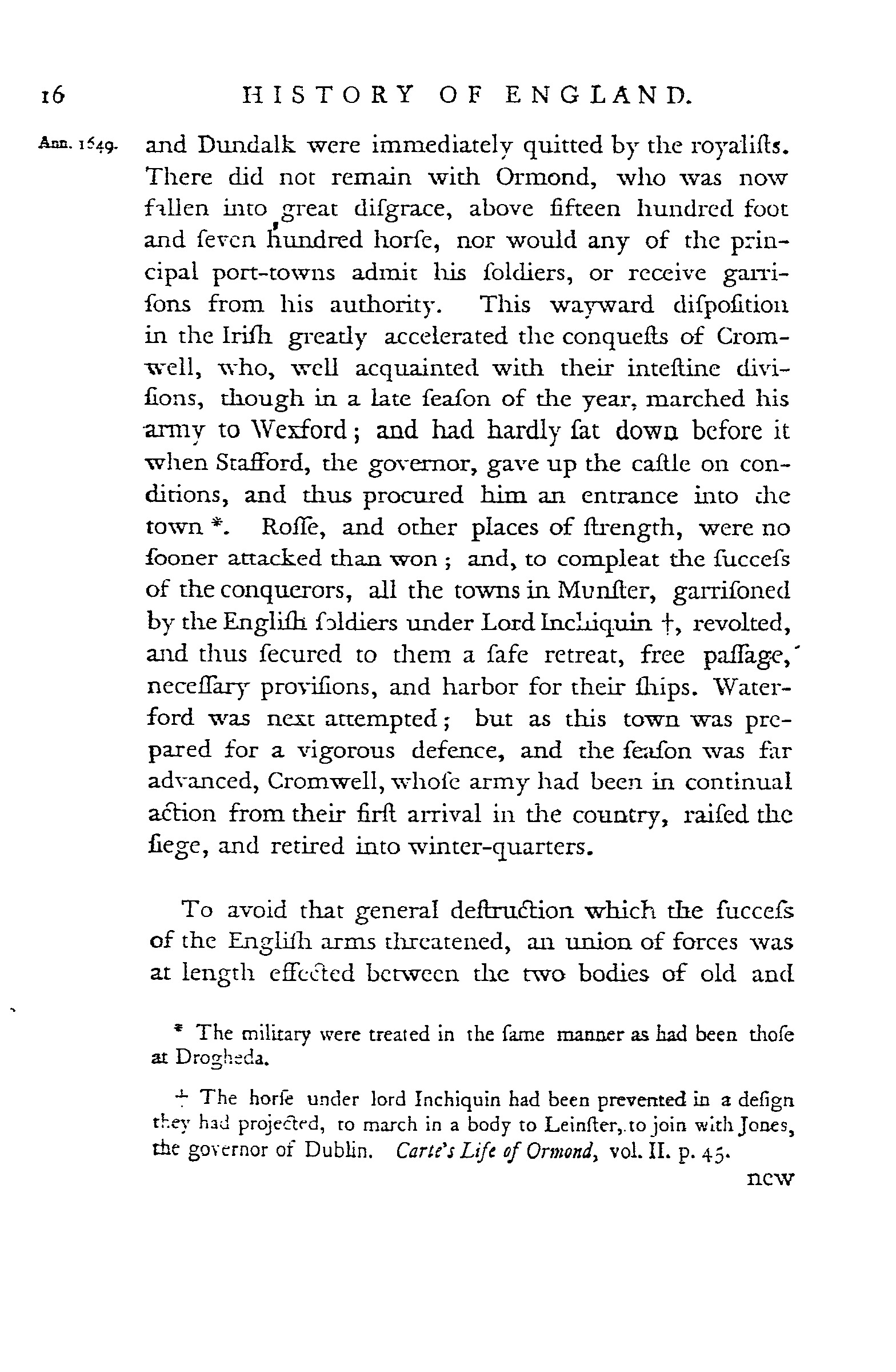
Figure 2. Example of Macaulay including sources in her footnotes, from the fifth volume of her History (ECCO).
While current scholars may bemoan the loss of Macaulay’s footnotes in those last three volumes, it is not surprising that her readership loudly decried them — they were, to say the least, extensive. In examining the first twenty pages of the fifth volume, four pages contain only a single sentence of the main body of work while the remainder of the page is dedicated to footnotes, and only one page of the twenty contains no footnotes at all. One would almost be reading another work entirely alongside the first if reading every note. But there is a common question that arises when considering eighteenth-century works of history: what did they use as sources? Historians of the eighteenth century were not always forthcoming, but Macaulay’s footnotes begin to answer this question, at least for the first five volumes of the History, and her printed Catalogue speaks to much of the rest. As Hill and Hill write, the Catalogue is a valuable contribution to scholarship, given that “it provides not only knowledge of at least some of the seventeenth-century sources at her disposal, but also enables us to re-evaluate her scholarship in light of those sources and how she used them” (269).
Figure 3. From the fifth volume of Macaulay's History (ECCO).
And looking at Macaulay’s A Catalogue of Tracts could very well explain her profuseness in footnotes: if the Catalogue is any indication, she was remarkably well-read on the subjects about which she wrote. Bridget Hill and Christopher Hill’s “Catharine Macaulay’s History and her Catalogue of Tracts” looks closely at one of the only surviving physical copies, held by the British Library, and in looking at Macaulay’s work and Catalogue they argue that “many of today’s respected seventeenth-century historians are less well briefed” (275). Alongside its many sermons and tracts, A Catalogue of Tracts also lists letters, manuscripts, speeches, petitions, pamphlets, and literature. Hill and Hill write that it “needs to be stressed that the collection is mainly of tracts — mere pamphlets not bound volumes — and not her whole library, whatever that may have consisted of” (282), and this note from Hill and Hill confirms that the Catalogue held many primary sources, most of which, if not all, Macaulay would have used in the research and writing of her History. This is an invaluable work in the face of the loss of Macaulay’s footnotes in volumes six through eight, which obscures her sources. The Catalogue was published in 1790, and Hill and Hill, who examined the British Library copy, describe it as “roughly printed” (374). It is unknown why Macaulay had it published, or who published, printed, or sold the work, and it is only tentatively listed as having been printed in London by the ESTC. Although we have very little bibliographical information about the Catalogue and cannot verify the record without examining a digitized or physical copy, it is included in the WPHP as a work compiled by Macaulay, even if she was likely not doing the actual work of creating the catalog herself (Hill and Hill 283).
While we are able to include very little in our title record for the Catalogue of Tracts, the eight volumes of her History (aside from the fourth) have robust records, providing a detailed timeline of publication for the project. While we do not usually create records for individual volumes, we do make exceptions when volumes are published in different years with different publishers in order to more accurately and clearly collect the bibliographical information for each. The first volume of the History was published in 1763 by John Nourse, Robert and James Dodsley, and William Johnston. “Overnight,” Bridget Hill points out, “[Macaulay] became ‘the celebrated Mrs Macaulay’” (ODNB). The second, third, and fourth volumes were self-published—meaning Macaulay took on the financial risk, although scholars are uncertain why—shortly after, in 1765, 1767, and 1768, and the fifth was published by Edward and Charles Dilly in 1771. The sixth and seventh volumes were not published until 1781, a full ten years later, and the eighth two years after in 1783, bringing the span of publication for the entire project to a full twenty years.
Figure 4. "Catharine Macaulay (née Sawbridge)" by Robert Edge Pine (1775). National Portrait Gallery.
But Macaulay was not out of the public eye or mind during that decade between volumes five and six, nor during the entire twenty years of publication. She published A modest plea for the property of copyright in 1774, and An address to the people of England, Scotland and Ireland, on the present important crisis of affairs in 1775, which went into at least three editions that year, and Devoney Looser writes that “throughout the 1760s and 1770s, Macaulay’s name appears regularly in newspapers, with reports on her health, where she had dined, and who has visited her. It was said that Macaulay’s portrait was sold on every print seller’s counter; her figure was made into porcelain; and she was ultimately represented in a life-sized coloured wax figure” (3). Alongside evidence of her celebrity, however, were critiques of the ‘female historian,’ as Macaulay terms herself in the introduction to the first volume of her History and as she later becomes known. Macaulay writes apologetically, “The inaccuracies of style which may be found in this composition, will, I hope, find favor from the candor of the public; and the defects of a female historian, in these points, not weighed in the balance of severe criticism” (xviii). Looser points out that “such apologies were customary in the context of the period’s writing by women” with “many [prefacing] their works with requests seeking chivalrous treatment from critics” (8). And this preemptive apology indeed predicts the criticism Macaulay would receive about being a female historian: Bridget Hill writes that “after mild praise [for the History] the Review expressed the wish that ‘the same degree of genius and application had been exerted in more suitable pursuits’, for the writing of history was not recommended ‘to the practice of our lovely countrywomen’” (ODNB, Monthly Review).
The gossip and criticism was inevitable, as it is for most celebrities, and especially for women who are pushing against — or stepping beyond — the bounds of propriety or tradition. Macaulay’s position in the public eye was a result of no one particular thing, but many: alongside the popularity of the History, she was an outspoken republican, a Bluestocking in spirit and art if not always in name, and a regular topic of gossip for her shocking relationships, one of which was marriage to the 21-year-old William Graham when she was forty-seven (ODNB). Her work was, however, largely well-received by her female contemporaries, who argued the criticism she received was a result of her position as a female historian. Mary Hays wrote about Macaulay in Female Biography (1803) that “a female historian, by its singularity, could not fail to excite attention: [Macaulay] seemed to have stepped out of the province of her sex; curiosity was sharpened, and malevolence provoked. The author was attacked by petty and personal scurrilities, to which it was believed her sex would render her vulnerable” (292). Hill and Hill point out that Mary Wollstonecraft described her as “an example of intellectual acquirements supposed to be incompatible with the weakness of her sex,” going on to say she wrote “with sober energy and argumentative closeness” (Hill and Hill 269; Wollstonecraft). Macaulay’s influence on the genre and women’s involvement in it, regardless of the loud and gendered criticism she received, was considerable: no longer was the term ‘female historian’ “used rarely, and when used, used mockingly,” (Looser 7) as it was prior to the eighteenth century and the publication of Macaulay's impressive History.
WPHP Records Referenced
Macaulay, Catharine (person, author)
Hume, David (person, author)
A History of England, volume VI (title)
A Catalogue of Tracts (title)
A History of England, volume I (title)
A History of England, volume II (title)
A History of England, volume III (title)
A History of England, volume IV (title)
A History of England, volume V (title)
A History of England, volume VII (title)
A History of England, volume VIII (title)
John Nourse (firm, publisher)
Robert and James Dodsley (firm, publisher)
William Johnston (firm, publisher)
Edward and Charles Dilly (firm, publisher)
A modest plea for the property of copyright (title)
Hays, Mary (person, author)
Female Biography (title)
Wollstonecraft, Mary (person, author)
Works Cited
Hays, Mary. Female Biography; or, Memoirs of Illustrious and Celebrated Women, of All Ages and Countries. Richard Phillips, 1803.
Hill, Bridget. "Macaulay [née Sawbridge; other married name Graham], Catharine (1731–1791), historian and political polemicist." Oxford Dictionary of National Biography, Oxford UP, 2012, https://doi.org/10.1093/ref:odnb/17344.
Hill, Bridget, and Christopher Hill. "Catharine Macaulay's History and her Catalogue of Tracts." The Seventeenth Century, vol. 8, no. 2, Fall 1993, pp. 269–85.
Looser, Devoney. "Catharine Macaulay : The ‘Female Historian’ in Context." Études Épistémè [En ligne], vol. 17, 2010, n.p.
Macaulay, Catharine. The History of England, from the accession of James I. to the rise of the Brunswick line. Vol. I. John Nourse, 1763.
Macaulay, Catharine. The History of England from the accession of James I to the elevation of the House of Hanover. Vol. V. Edward and Charles Dilly, 1776.
Macaulay Catharine. The History of England from the Accession of James I. to the Revolution. Vol. VI. London, 1781.
Woolf, Daniel. "‘A most indefatigable love of history’: Carter, Montagu, and female discussions of history, 1740–1790." Women's History Review, vol. 20, no. 5, pp. 689–718.
